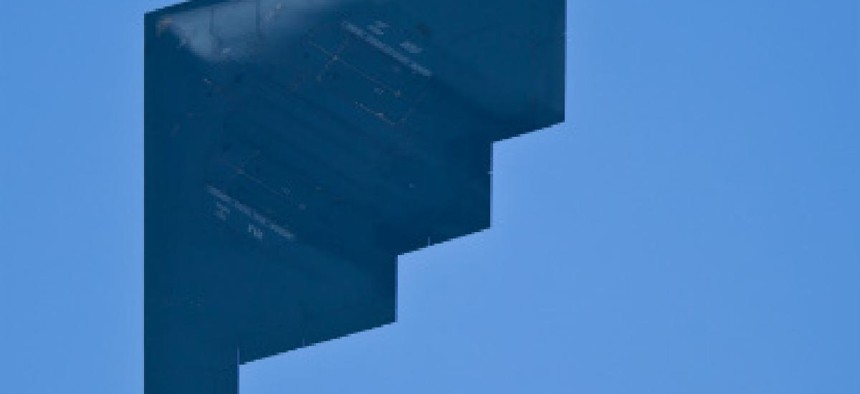Can stealth technology fly into the future?

A new study eyes where investment in stealth technology is headed.

What: "Survivability in the Digital Age: The Imperative for Stealth," a study from the Mitchell Institute for Aerospace Studies
Why: This study examines the role of "computational power" in the evolution of stealth technology and its long-term viability. While stealth capabilities have increased, so too have the challenges that this technology was originally intended to address. Thus, improvements to radar, the study notes, "are counterbalanced by the impact of that same digital technology on stealth aircraft design."
The authors, retired Air Force officers Maj. Gen. Mark A. Barrett and Col. Mace Carpenter, argue that the dynamic between offensive and defensive capabilities (stealth vs. radar) will define the coming decades, and they whether if the U.S. should "invest in stealth systems to improve them or mitigate technology that attempts to counter them."
In opening remarks at the release of the study on Aug. 2, Sen. Mike Rounds (R-S.D.) said of the 40-year-old stealth technology: "There's a point in time to reflect and consider whether we've reached the knee in the cost-benefit curve, which should drive our future investment strategies."
The Mitchell Institute study closely looks at those investment strategies. The study analyzes the "impact of digital age improvements," looking at how technology influences both the cost and the pace of improvements to stealth aircraft design.
Stealth technology is beneficial, the study argues, simply because it forces adversaries to devote precious resources to improve their nation's radar detection capabilities. These expenditures then prevent those countries from directing resources toward other technological military investments.
Additionally, Barrett and Carpenter argue, U.S. advances in cyber operations gives American stealth technology a unique advantage in offense.
Verbatim: "Stealth is normally most effective when employed in concert with other aircraft and tactics. Adding stealth to multi-capability force packages, coupled with cyber operations, creates a lethal synergy. Mixing stealthy aircraft with conventional aircraft, deception, air defense suppression, and electronic jamming will complicate an enemy’s defensive problem set by an order of magnitude. By reducing the enemy’s ability to detect attackers, air defense efforts will become more complicated, leading to a sharply reduced timeframe for an adversary to react effectively in future campaigns."
Read the full study here.





